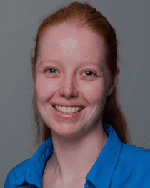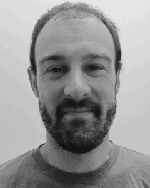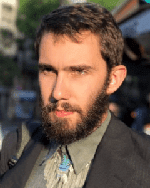Organizers: Oliver Braddick1, Janette Atkinson2; 1University of Oxford, 2University College London
Presenters: Oliver Braddick, Rebecca Saxe, T. Rowan Candy, Dennis M Levi, Janette Atkinson, Tessa Dekker
In the last two decades, the science of human development has moved beyond defining how and when basic visual functions emerge during infancy and childhood, through both technical and conceptual advances. First, technical progress in MRI and near infrared spectroscopy and dedicated efforts by researchers have made it possible to image and localize activity in the visual brain, as early as the first months of life. These will be exemplified in the symposium by Rebecca Saxe’s presentation on the development of area specialization within the ventral visual stream in early infancy, and in Tessa Dekker’s research on childhood development of decision making for efficient visual cue combination, combining neuroimaging with novel behavioural measures .Secondly, Rowan Candy’s presentation will show how measurements of infants’ eye movements and refractive state using Purkinje image eye tracking and photorefraction have been refined to new levels of accuracy, providing novel insights into oculomotor development and how it interacts with binocular visual experience from the first weeks of life. This work offers the possibility of understanding the early development of strabismus where accommodation-vergence synergy develops atypically. The resulting condition of amblyopia reflects early plasticity, but the work presented by Dennis Levi shows that this condition remains treatable into adulthood, using novel therapies designed to re-establish binocular interactions rather than simply strengthen the cortical input from the amblyopic eye, with new implications for extended critical periods . Third, these approaches, alongside new behavioural methods , have highlighted the interlocking relationships between basic visual functions and visuocognitive processes such as decision-making and attention. Janette Atkinson’s presentation will define the key role of attention in visual development, and how different components of attention, depending on distinct brain networks, can be separated in young children and those with neurodevelopmental disorders. Different disorders (e.g. perinatal brain damage, Down and Williams syndromes) show distinctive profiles of attentional impairment. Imaging studies of cortical area and fibre tract development suggest that specific parietal and frontal networks are associated with individual differences in children’s visual decision-making and may also develop atypically across many developmental disorders. Tessa Dekker’s presentation will show how decision processes operating on visual information are as critical in development, including visuomotor development, as the development of basic sensitivity to visual feature properties. Detailed modelling of visual and visuomotor behaviour and localised brain responses indicate a prolonged development into middle & late childhood of the integrative processes required for efficient visual decisions. These talks illustrate some highlights in a much wider field of new insights into both typical and atypical visual development. Oliver Braddick’s presentation will outline the scope of this broader field, including pointers to work on automated visual assessment, infant eye-tracking with head-mounted cameras in the natural visual environment, isolating specific discriminations through frequency-tagging EEG, MRI analyses of developing brain connectivity, and the developmental impact of early and late visual deprivation. This whole range of work has greatly extended our understanding of the developing visual brain and its intimate links throughout neurocognitive systems, and allows us to identifiy the challenges ahead.
Presentations
New techniques, new questions in visual development
Oliver Braddick1; 1University of Oxford
In the last two decades, the range of research on visual development has been expanded by new methodologies, some represented in this symposium, which provide richer data and more direct insights into the visual brain mechanisms underlying development. This talk provides a brief overview of other advances which have started to answer some key questions in visual development: (i) application of eye tracking to automated visual assessment; (ii) head-mounted eye tracking yielding data on how infants sample their natural visual environment; (iii) frequency-tagging to refine the specificity of information yielded by EEG; (iv) MRI approaches to the connectivity and structure of the developing visual brain, including individual differences in development; (v) broader studies of the impact of visual deprivation on human visual development. As well as applying new methods, developmental research, in common with vision research more generally, has also extended its scope into the interfaces of vision with attention, action systems, decision processes, and other aspects of cognition. All these advances open the prospects of a wider and deeper understanding of the role of vision in the development of brain systems in infancy and childhood. However, there remain challenges in understanding the origins of individual differences across children in visuospatial, visuomotor, and visuosocial cognition.
The origins of specificity in ventral-stream cortical areas
Rebecca Saxe1, Heather Kosakowski1, Lindsey Powell1, Michael Cohen1; 1Massachussetts Institute of Technology
In human adults, visual responses to object categories are organized into large scale maps; and within these maps are regions responding highly-selectively to behaviourally significant stimulus categories, such as faces, bodies, and scenes. Here we used fMRI in awake infants to directly measure the early development of these visual responses. Our first study (n=9) found that extrastriate cortex of 4–6-month-old infants contains regions that respond preferentially to faces, scenes, and objects with a spatial organization similar to adults. However, the responses in these regions were not selective for a single category. In a second fMRI study (n=26, age 2-9 months) we replicated these results, again finding preferential responses to faces, scenes and objects (but not bodies) in extrastriate areas. Third, we again replicated spatially separable responses to faces and scenes, but not bodies, within lateral occipito-temporal cortex, using functional near infrared spectroscopy (fNIRS). These results demonstrate that the large-scale organization of category preferences in visual cortex is present within a few months after birth, but is subsequently refined through development.
Infants’ control of their visual experience through vergence and accommodation
T. Rowan Candy1; 1University of Indiana
While a large literature has demonstrated the impact of abnormal visual experience on postnatal development of the visual system, the role of the ocular motor visual system in defining retinal visual experience during infancy and early childhood has been less well understood. Advances in instrumentation have made it possible for us to track simultaneously infants’ vergence eye movements and accommodation, showing that these responses are coupled, associated with sensitivity to binocular disparity, and can be dynamically adjusted, from the first weeks of life. This control, along with that of conjugate eye movements, enables infants to control their own visual experience in their dynamic three-dimensional world. In turn, visual experience enables most children to calibrate these coupled responses effectively, while others develop misalignment of their eyes and strabismus. A key question for future studies is to explore the source of this individual failure, whether it lies in disrupted fusional vergence potential or in the ability to undergo adaptation. This talk will also briefly consider the following questions: How does the improving spatial resolution of the infant’s visual system affect the iterative development of motor and sensory visual systems? How can human visual development inform machine learning and robotics? How does development of the first stages of visual processing impact higher-order extrastriate function, and what is the influence of top-down processes?
Rethinking amblyopia and its therapies
Dennis M Levi1; 1University of California, Berkeley
Recent work has transformed our ideas about effective therapies for amblyopia. Since the 1700’s, the clinical treatment for amblyopia has consisted of patching or penalizing the strong eye, to force the “lazy” amblyopic eye, to work. This treatment has generally been limited to infants and young children during the “critical” or sensitive period of development. Over the last 20 years, we have learned much about the nature and neural mechanisms underlying the loss of spatial and binocular vision in amblyopia, and that a degree of neural plasticity persists well beyond the sensitive period. Importantly, the last decade has seen a resurgence of research into new approaches to the treatment of amblyopia both in children and adults, which emphasise that monocular therapies may not be the most effective for the fundamentally binocular disorder that is amblyopia. These approaches include perceptual learning, video game play and binocular methods aimed at reducing inhibition of the amblyopic eye by the strong fellow eye, and enhancing binocular fusion and stereopsis. This talk will highlight both the successes of these approaches in labs around the world, and their dismal failures in clinical trials. Reconciling these results raises important new questions that may help to focus future directions.
Typical and atypical brain development for components of visual attention
Janette Atkinson1; 1University College London
The development of attention mechanisms plays a key role in how visual information is used and in determining how the visual environment shapes visual development. However, visual attention is not a unitary process but involves multiple components of selective attention, sustained attention, and executive function(s). The Early Childhood Attention Battery (ECAB) allows these components to be separated in preschool children or children with equivalent mental age and defines individual and group differences in their ‘attention profile’ across these components. For example, we find that sustained visual attention is impaired in children with perinatal brain injury and/or very premature birth, but that this ability is relatively preserved in children with Williams (WS) and Down Syndrome (DS). Children with DS or WS have difficulties inhibiting prepotent responses in executive function tasks, although in WS these difficulties are much greater in the visuospatial than the vebal domain. Spatial attention processes are particularly associated with structures in the dorsal stream and our past work has highlighted attention as an element of the ‘dorsal stream vulnerability’ characterising many developmental disorders. We will discuss these patterns of deficit across syndromes in relation to the dorsal and ventral attention networks and salience network defined by data from current connectivity studies in children and adults, including our findings on the tracts associated with children’s performance on visual decisions. Individual variations in the way these networks interact may determine the way top-down goals and bottom-up sensory stimulation are integrated in the control of visual behaviour in development.
Model-based MRI and psychophysics reveal crucial role of decision-making in visual development in childhood.
Tessa Dekker1, Marko Nardini2, Peter Jones1; 1University College London, 2University of Durham
Vision undergoes major development during infancy and childhood, demonstrated in improvements in both detection and recognition tasks. Classically, developmental vision research has focussed on sensitivity improvements in early visual channels. However, in recent years, decision-theoretic approaches have formalised how changes in visual performance could also result from more efficient use of available information, for example by optimising decision rules, cost functions, and priors. Using these quantitative frameworks, we are beginning to understand how these factors contribute to childhood vision. For example, improved depth perception in late childhood reflects a shift from processing depth cues independently to combining them in visual cortex, as demonstrated by the emergence of fMRI evidence for fused depth-cue representations within neural detectors in area V3B. Similarly, development of visual motion-, location-, and object perception, in part reflects more efficient combining of stimulus features (e.g., averaging dots across displays) besides greater sensitivity to these features’ properties (e.g., single dot motion). Thus, rather than greater sensitivity to basic visual information, substantial improvements in visual discrimination and detection may reflect better inferential capacities. This also applies to visually-guided movement tasks that emulate real-life action under risk: while adults can rapidly identify visuomotor strategies that minimise risk and uncertainty in new situations with complex cost factors, children up to age 10 years do not. Together, these studies show that improved decision-making plays a major role in visual development in childhood, and that modelling this role is needed to gain computational-level insight in the driving factors of human visual plasticity.






